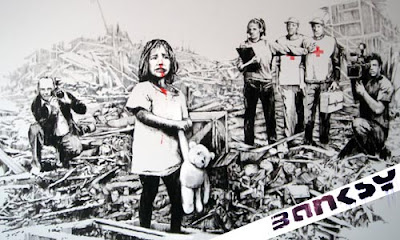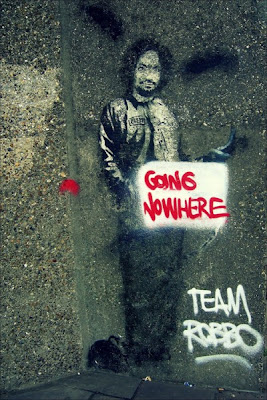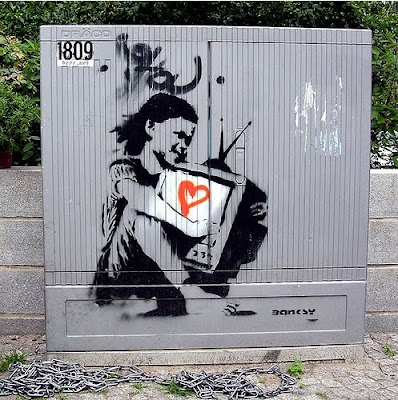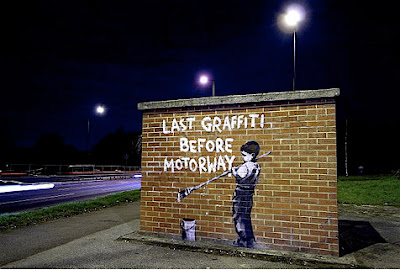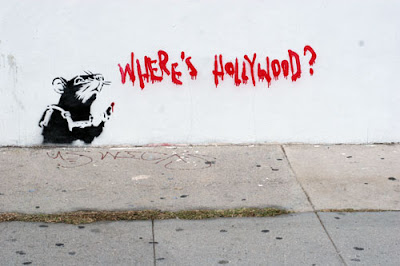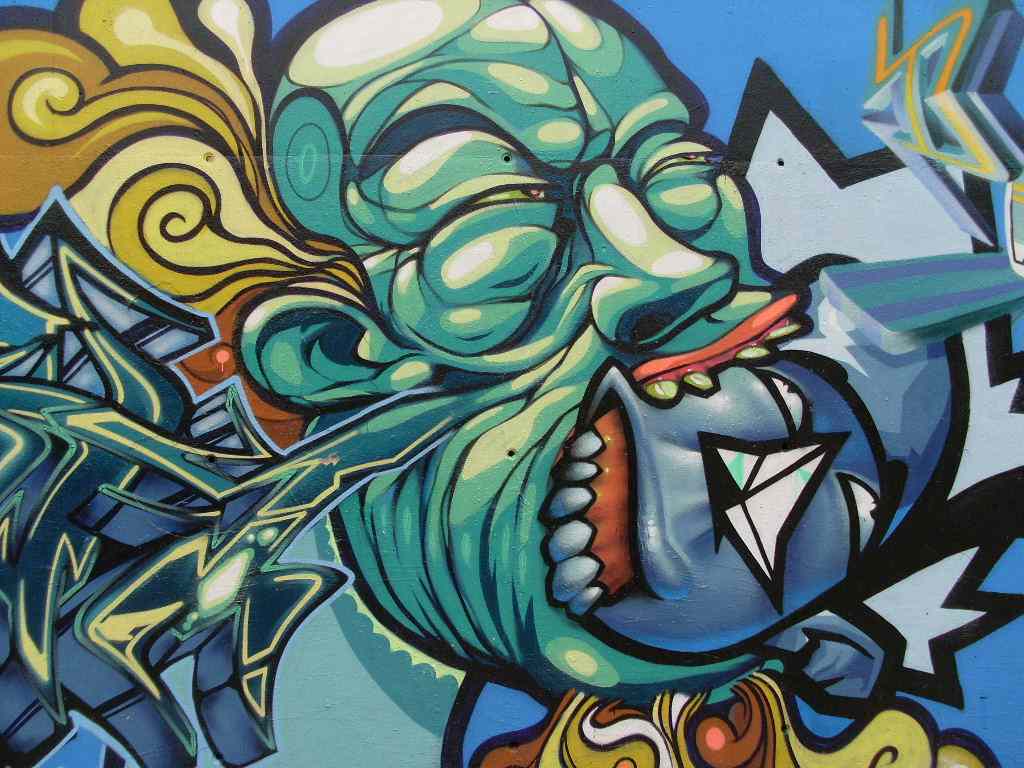Comic books have been the central staple of U.S. youth culture for nearly a century. As visual communication of cultural phenomena, they can tell us a great deal about what is considered to be important in the American culture, and how these values are manifested in various symbols, characters and events. They have been of fundamental importance in both shaping and reflecting the country's political, social, ethical and even sexual mores ever since Tarzan, Dick Tracy, and Flash Gordon made their first appearances in the early 20th century. But, the first originators of this particular art form were European, artists like Rudolphe T�pffer and Wilhelm Bush.
Rudolphe T�pffer created the first comic strip in Switzerland in 1827, he went on to publish seven graphic novels. Ten years later, he published "The Adventures of Obadiah Oldbuck", which is considered to be the earliest known comic book. It became the first comic book published in the United States in 1842, "The Adventures of Obadiah Oldbuck". Each of its forty pages had several picture panels, which used captions instead of word balloons. T�pffer's pictures carried relatively little of the narrative. However, the images did add a great deal to the humor. In his Essay on Physiognomics in 1843, T�pffer has offered the following theatrical approach to creating comics:
"To construct a picture-story does not mean you must set yourself up as a master craftsman, to draw out every potential from your material � often down to the dregs! It does not mean you just devise caricatures with a pencil naturally frivolous. Nor is it simply to dramatize a proverb or illustrate a pun. You must actually invent some kind of play, where the parts are arranged by plan and form a satisfactory whole. You do not merely pen a joke or put a refrain in couplets. You make a book: good or bad, sober or silly, crazy or sound in sense."
In 1865, Wilhelm Bush, a German poet and artist, who published caricatures in the newspaper Fliegende Bl�tter, created comics called "Max und Moritz" which became very popular. Inspired by the work of Rodolphe T�pffer, Max und Moritz developed into one of the most appreciated comics of 19th Century, narrating the misadventures of the two opportunist characters that often were seeking sadistic adventures. Among Bush's other comics were Drei Bilderbogen (1860-62), Bilderpossen (1864), Die K�hnen M�llerst�chter (1868), Pater Filuzius (1872), Die Fromme Helene (1872), Dideldum (1874), Flipps der Affe (1879), Mahler Klecksel (1884), Von mir �ber mich (1879), Eduards Traum (1891), Der Schmetterling (1895), and others.Drei Bilderbogen (1860-62), Bilderpossen (1864), Die K�hnen M�llerst�chter (1868), Pater Filuzius (1872), Die Fromme Helene (1872), Dideldum (1874), Flipps der Affe (1879), Mahler Klecksel (1884), Von mir �ber mich (1879), Eduards Traum (1891), and Der Schmetterling (1895).
Nevertheless, the origin of the comics, an icon of American culture, could be traced back to the comic strip which appeared by the end of the nineteenth century. In 1892, James Swinnerton published the very first newspaper comic strip, The Little Bears and Tigers, run by the San Francisco Examiner. Later on men like Richard Felton Outcault, William Randolph Hearst, Joseph Pulitzer, James Swinnerton and Rudolph Dirks, in their attempts to attract readers to the Sunday edition of their local newspapers invented the modern comics. In Down Hogan's Alley , Richard Outcault who was an illustrator with The World, published by Joseph Pulitzer in New York in 1895, created the first comic strip. The so-called Yellow Kid was a bald impish gap tooth street urchin wearing a nightshirt and with a playful grin, depicted in a one black and white panel, but shortly afterwards his frock was printed in yellow.
The Little Bears , drawn by James Swinnerton, appeared shortly afterward in William Randolph Hearst's Journal American , which gradually evolved into the Mr. Jack a very successful comics featuring a bachelor tiger. And finally came Swinnerton's most famous character, Little Jimmy , which had two decades of good long run starting from the heyday of the humor strip in the 1920's.
However, it was Rudolph Dirk who created cartoon panels' dialogue in "word balloon", indicating the speaker. Dirk's Katzenjammer Kids , which appeared on December 12, 1897 in the Journal American, also was the first comic strip that combined both the internal dialogue and panelized continuity, which later on became the standard form of the modern visual narrative strip.
The comic strips soon became very popular and newspapers across the country clamored for artists. The competition culminated in the famous Yellow Wars when Hearst and Pulitzer began poaching each others artists and editorial crew en-masse to gain circulation. Of course, there were no shortages of bad stories or mediocre cartoonists, however there was also the brilliant Krazy Kat.
Krazy Kat, created by cartoonist George Herriman, and published daily in newspapers between 1913 and 1944, has been praised by many as a canonical work of modernism for its sheer aesthetic achievement, narrative inventiveness, and cultural significance. George Herriman was born in a light-skinned, Creole African-American family in New Orleans, Louisiana, though the family moved to Los Angeles six years later. He moved to New York City in 1900, and his first cartoons appeared in Judge magazine the following year, succeeded soon after by his first newspaper strips. The artistic quality of his work was soon noticed and as early as 1902 there were praises like �Art combined with poetry,� from Bookman. Krazy Kat was a significant piece of cultural work on race/gender relations that had a major influence on the work of other artists. Many have written about it including E.E. Cummings and Bill Waterson.
Herriman's Krazy Kat was influenced by Outcault's Pore Lil' Mose, a strip which after giving up his Yellow Kid in 1901, Outcault was creating for the Herald. It was the the first comic that featured a sympathetic African American as the main character. The plot was taking shape in Cottonville, Georgia, but Outcault soon moved the narrative to New York City, where Mose's race in the alien environment of New York turns him into an outsider confronted by the increasing disparity between rural and urban American life. For Mose the farm country is representing the Old Country in Africa. In 1910 Herriman, whose short-lived 1902 strip Musical Mose was clearly derived from Outcault's Pore Lil' Mose, created The Digbat Family a strip about the plight of apartment dwellers in which the protagonists are constantly harassed by their upstairs neighbors, whom neither the Dingbats nor the readers ever see. Their narrative took up most of the main strip at the top of a shorter strip at the bottom, which narrated the story of an irritable mouse Ignatz, who tormented the Digbats� wacky black cat. In 1913 Herriman renamed the top strip The Family Upstairs, and at the same time, the cat and mouse strip was spun off into Krazy Kat. Krazy was a black cat. Herriman used the black Krazy and the Jewish Ignatz who are relocated to the desert of New Mexico, to sarcastically highlight various immigration issues and fulfilment of Manifest Destiny in its American context.
As Elisabeth Crocker has argued �Herriman couched his assertions about the socially-constructed nature of categories like race and gender, as well as categories such as class, age, ethnicity, and occupation, so deeply in the sophisticated allegory of his comic strip, however, that few readers noticed them.� In one of his most metaphysical pictures Herriman presents Krazy as saying to Ignatz: "I ain't a Kat, and I ain't Krazy ...it's wot's behind me that I am . . . it's the idea behind me, 'Ignatz' and that's wot I am." and Krazy is pointing towards the blank space behind him, which supposed to define for the reader his existence or the "idea". According to John Alden Carpenter, in his foreword' to his ballet, Krazy Kat is a combination of Parsifal and Don Quixote, the perfect fool and the perfect knight. Ignatz is Sancho Panza, who loathes the philosophic ramblings of Krazy; and interrupts with a well-directed brick the romantic excesses of his companion. He "has no time" for foolishness; he is a realist and Sees Things as They ARE. "I don't believe in Santa Claus," says he; "I'm too broad-minded and advanced for such nonsense."
William Randolph Hearst loved Krazy Kat, which according to one newspaper editor was �weird stuff" that "nobody can understand�). He took it out of syndicated comics and included it into his nine papers. In spite of persistent angry letters of complaint from readers, and objection of local editors, Hearst who understood the significance of Krazy placed it in the New York Journal�s drama & art section, rather than with the other comics. He gave Herriman a lifetime contract, which was the reason the strip continued for over 30 years.
The convergence of the science fiction and comic strip began with Buck Rogers in the 25th Century A.D, based on a story by Phillip Nowlan which under its original title Armageddon 2419 A.D. appeared in Amazing Stories Magazine in 1928, and was noticed by John Flint Dille, a comic strip syndicator, who bought the rights and hired Richard Calkins to illustrate it into a comic strip. Nowlan's, Dille's and Calkin's efforts combined to produce what was to become an important part of American pop culture. The comic strip itself ran for 38 years. Like Rip Van Winkle, Buck awakens 500 years in the future, finding America has been destroyed by Mongolian armies, led by devilish Kane. Buck and his companions the beautiful Wilma and Dr.Huer start a battle to liberate the country.
Other early comic strips of note were, Tarzan, Dick Tracy, and Flash Gordon. In 1911, Edgar Rice Burroughs created Tarzan, the quintessential jungle man. Tarzan of the Apes was rejected by every major American publisher before being published in the October 1912, issue of All-Story Magazine. Illustrated by Harold Foster in 1929 and later by Rex Maxon; Tarzan of the Apes was an immediate and phenomenal comic strip success. Dick Tracy that premiered in the Detroit Mirror newspaper, part of the Chicago Tribune Syndicate on October 4th, 1931. Originally named Plainclothes Tracy was later renamed to Dick as the term was also slang for a detective. Creator Chester Gould was one of the first to introduce violence in the strips , that with names like Flattop Jones, Mumbles, Splitface, and Splitscreen were precursors to super villains of today's comics. Few comic strips have captured readers' imaginations like Flash Gordon." Originated in 1934 by legendary comic-strip artist Alex Raymond, Flash has set the standard for science-fiction adventure, even inspiring such modern-day classics as "Star Wars." The adventure of this intergalactic warrior, with his beautiful companion Dale Arden, and smart scientist, Dr. Hans Zarkov survived for more than 70 years.
In 1938, Jerry Siegel and Joe Shuster, two teens from Cleveland, Ohio created a superhero with remarkable abilities, surpassing both Flash Gordon and the character in Philip Wylie's famous novel Gladiator. Superman was actually an alien from the planet Krypton, that according to Action Comics #1, could "leap 1/8 of a mile, hurdle a twenty story building, raise tremendous weights and run faster than an express train". The young creators could not sell the story to any newspaper editor. However, when they showed their sketches to Max Gaines, the publisher of All American Comics Company, a part of DC Comics, he said that Sheldon Mayer over at DC, who was about to launch a new comic title, may be interested. Mayer was indeed interested and bought all rights to its publication for $130. The first issue was an immediate hit,and the competition quickly began to respond by creating other superheroes.
Before World War II, Superman fought "a never-ending battle for truth and justice." but after the lessons of World War II, particularly in the gas chambers of Europe, Pa Kent was telling the young Clark he must always use his powers "in the interests of truth, tolerance and justice." Then during the cold war, the phrase codified in favor liberty and democracy: "a never-ending battle for truth, justice and the American way." However, in 2011 Superman decides it's time to become a global citizen in the 900th issue of Action Comics.
�I'm tired of having my actions construed as instruments of U.S. policy,� says the superhero after both U.S. and Iranian officials criticize him for attending a peaceful anti-Ahmadinejad protest in Tehran.
"I stayed in Azadi Square for 24 hours. I didn't move. I didn't speak. I just stayed there," Superman tells a U.S. national security adviser, who fears the hero has gone rogue. Iran's government, meanwhile accuses him of acting on behalf of the U.S. President, and calls his protection of the million-strong protestors an act of war.
By the time the WWII started, the number of superheros had mushroomed, as it appeared that no amount of supply can satiate the great demand for comics. Some of the issues could quite frequently outsell news stand magazines like Time and Newsweek. It is reported that Captain Marvel sold over 2 million copies per month at it's peak and other titles commonly sold close to a half million or more copies. With the start of the war, all superheros enlisted to fight the Nazi's. One of them Captain America, created by Jack Kirby and Joe Simon, attacked Hitler even before the US entry in the WAR.
The golden age of superheroes came to an abrupt end after the war. The GIs were returning, picking up their interrupted lives, marrying and starting families. They were now more interested in Walt Disney's family friendly comics. Even the teen idol Archie had a better sales figures than superheros. Demand for Crime Does Not Pay of Lev Gleason, a small publisher, was also steadily rising, which by 1947 encouraged the competition to come up with an array of crime comics, such as True Crime, True Western Crime, Women Outlaws, and so on.
In 1956 Showcase Comics premiered publishing adventures of firefighters, scuba divers and the like.
The company began to introduce new heroes such as Adam Strange, Space Ranger and Green Lantern. It also revived some of the DC's heroes such as Challengers of the Unknown, with their own title, in 1958, Flash Gordon, with his own title, continuing the numbering from the defunct series, in 1959. Green Lantern got his own title in 1960. The Justice League of America was formed by the Flash, Green Lantern, Wonder Woman, Martian Manhunter and Aquaman made up the core of this team, joined by even Batman and Superman at some point. Their popularity was so great that DC gave the group their own title a scant six months after they first appeared in Brave and Bold #28.
As can be expected the quality of graphic design was not very high at the best of times and the highly artistic designs were not evenly distributed among various comics. The main focus of many comics were the Good Girl Art, a sexist approach to the objectification of the women, who were depicted with large breasts, scantily dressed and showing as much cleavage as possible.
In the early 50s the Senate Subcommittee on Juvenile Delinquency had released an alarming report on the impact of comics, and a number psychologists including Frederic Wertham in his book Seduction of the Innocent argued that comic books are in part responsible for the degradation of the American youth, enticing them towards criminal activities, and discouraging them in pursuing academic achievements, and promoting the use of drugs. The backlash was severe as many schools and PTA groups burned comic books, and many cities and even store owners refused to display them. The result was devastating for publishers, and by 1955, most of them either had sharply downsized their operations or exited the industry. The Comics Code Authority introduced restrictive rules and regulations forbidding things like scantly clad women, successful criminals, horrific blood scenes, and words like weird, horror and terror. The beneficiaries were publications like Mad magazine which went on to become one of the most influential and popular humor magazines, and companies like DC, and Dell, that had adhered to high ethical standards, not any one of their titles was affected by these rules.
Batman was created by the artist Bob Kane and writer Bill Finger, which first appeared in Detective Comics #27 (May 1939). The original concept of Batman was developed by Kane, who was inspired by Sherlock Holmes, Zorro, a Leonardo Da Vinci sketch of a bat-winged flying machine. He sketched an early version of the character. Taking his idea to writer Bill Finger, and they further developed the concept. Finger felt the original Bat-Man looked too much like Superman with a mask and bat-wings. He recommended replacing the Da Vinci-inspired wings with a cape, giving him gloves, changing the character's bodysuit from red to gray, and encouraged Kane to replace the character's domino mask with a more bat-like hooded cowl, complete with "ears" which would make the character distinguishable even in silhouette. Batman was a success, and soon after, National suggested that character receive a youthful sidekick for which the name Robin was suggested by Jerry Robinson. Finger went on to write many of the early Batman stories, including making major contributions to the character of The Joker, as well as other major Batman villains. After the backlash of the mid-1950 against comics, Batman's more violent and darker character were abandoned in favor of his more positive qualities. Partly to counteract Wertham's claims about Batman and Robin's homosexuality, various female characters were introduced in the late 1950s, including Vicki Vale, Batwoman, and Batgirl. These characters provided "love interests" for both Batman and Robin.
Atlas Comics, formerly Timely Comics, changed themselves into Marvel Comics, and created an all-new bunch of superheroes starting with the Fantastic Four. Unlike the conventional superheros, the Fantastic Four had normal lives. and did not have secret-identities. They were members of a super-team, something that had been rarely seen before in comics. Then came the Hulk, Thor, Spider-Man, and the X-Men. All of which were done by the top-notch talent of the time, including Jack Kirby, Stan Lee, and Steve Ditko. Spider-Man also proved to be an important evolution in comics. Unlike Superman, he was a nerd and a student. He had no money to get gadgets like Batman and thus had to make his own. He is now considered one of the most popular characters in comics.
The Revolution of Underground Comix
In the late 20th century the revolutionary artists of the Underground Comix, altered the nature of comics perhaps for ever. The unconventional but popular art of these artists was coalescing to define a new representation of realism. The genesis of this movement stemmed from the socio-cultural tensions of the 1960s, which were the age of youth, as 70 million children from the post-war baby boom became teenagers and young adults. The movement away from the conservative fifties continued and eventually resulted in revolutionary ways of thinking and real change in the cultural fabric of American life. No longer content to be images of the generation ahead of them, young people wanted change. The changes affected education, values, lifestyles, laws, and entertainment. The new approach of comic books, movie posters, trading cards, surfer art, hot rod illustration, and so on was creating an unconventional art form that could not be accommodated easily into the academic vision of fine art. This subversive art found its most diehard adherents in some of America's most invective and hideous underground artists, illustrators such as Robert Crumb, Gilbert Shelton, Robert Williams, and Victor Moscoso.
One of the early revolutionaries was Robert Crumb, who in the spirit of the era, was experimenting with drugs including LSD and as a result had some so-called bad trips. He began drawing comics as a young boy in the 1950s. Universally acknowledged as the founder of the underground comics scene (often called "comix" to denote adult-themed comic books), Robert Crumb gained cult popularity for his pioneering Zap Comix, and stardom with the 1994 Terry Zwigoff documentary Crumb. Soon after he left New York's "East Village Other", a Greenwich Village newspaper, for which he was creating various strips, and illustrations, and moving to San Francisco in 1966, his work became a smash hit. He made quite a name for himself as the comic world's favorite enfant terrible; with characters like acerbic guru Mr. Natural and the ever-frisky Fritz the Cat, as he relished in the lewd. In spite of his poorly executed expressionism that at times tended towards abstraction, it was his harsh social criticisms of those who cannot face the true reality of themselves, and try to resort to all kind of excuses to hide behind the truth that struck a favorable chord with his viewers. As a response to the �family values� learned at the hands of a brutal father and amphetamine-addicted mother, his criticism of the contemporary American family in his Joe Blow comic series, in which he was alluding to an incestuous undercurrent, was particularly harsh. At the same time some of the crumb cartoons, such as Mr. Natural gets the bum's rush was sophisticated and philosophically thought provoking. One of Crumb creation, Zap number 4, was prosecuted for obscenity and after going through numerous appeals finally was ruled obscene and banned, after a long trial.
Best known for the creation of The Fabulous Freak Brothers, Gilbert Shelton was another pioneer of the Underground Comix movement. Born in 1940 in Houston, Texas, Shelton began his career in comic art doing strips for Boy Scout publications. He graduated with a bachelor�s degree in social sciences in 1961. After relocating to New York and finding a job as editor of automotive magazines, he began to send some of his drawings to various publications. One of his ctrations was Wonder Wart-Hog, a parody of Superman in the form of a pig which first appeared in Bacchanal, a short-lived college humor magazine, in the spring of 1962. In the summer of 1968, he moved to San Francisco and founded Rip Off Press which published THE FABULOUS FURRY FREAK BROTHERS. It became an overnight national phenomenon through syndication in dozens of underground newspapers and magazines. A spin-off strip, Fat Freddy's Cat, appeared in 1969.
One of the originators of Zap Comix, Robert Williams pursued a career as a fine arts painter some years before joining the art studio of Ed "Big Daddy" Roth in the mid-1960s. He joined the defiant, anti-war movement of early underground commix, and in 1968, participated in the opprobrious San Francisco group that published Zap Comix. In early punk rock art shows of after-hours clubs Williams was known as "artist's artist," His unique style was an imaginative admixture of underground comix and fauvism colors. Later on Williams moved to paintings. His neo-expressionist style is bold thoughtful and at the same time enigmatic.
In 1968, Victor Moscoso became a leading artist for Robert Crumb's legendary Zap Comix. Born in Spain, but growing up in Brooklyn, New York, Moscoso attended Cooper Union before transferring to Yale. At Yale, he studied with the modern colorist Joseph Albers, whose color theories were an important influence on the development of the psychedelic poster. In 1959 Moscoso moved west to attend the San Francisco Art Institute, and after receiving his MFA, he stayed at the Institute to teach lithography. Meanwhile, he also accepted commissions as a freelance graphic designer. In 1966, he began designing the psychedelic posters for the Family Dog, the promotional collective that organized drug intensive dances at the Avalon Ballroom.While working in comics, he also designed magazine cover art, billboards and album covers for Jerry Garcia, Bob Weir and Herbie Handcock.
Go to the next chapter; Chapter 42; The Swiss Grid System -- and the Dutch Total Grid
References
- David Carrier, The Aesthetics of Comics, Penn State Press, 2002 ISBN 0-271-02188-8
- Will Eisner Comics and Sequential Art Poorhouse Press 1985 ISBN 0-9614728-0-4
- Will Eisner Graphic Storytelling Poorhouse Press 1995 ISBN 0-9614728-3-9
- Gary Groth & R. Fiore The New Comics Berkley Books 1988 ISBN 0425113663
- Maurice Horn ed. The World Encyclopedia of Comics Avon 1977 ISBN 0877543232
- Scott McCloud Understanding Comics - the Invisible Art HarperCollins 1994 ISBN 0-613-02782-5
- Roger Sabin Comics, Comix and Graphic Novels: a History of Comic Art Phaidon 1996 ISBN 0714839930
- Coulton Waugh The Comics The Macmillan Company 1947 ISBN 0878054995
- Richard O'Brien The Golden Age of Comics, Ballantine Books, 1977. ISBN 0345255356
------------------------------------------------------------------------------------
This work is licensed under a Creative Commons Attribution-No Derivative Works 3.0 Unported License.





















 SS
SS


















